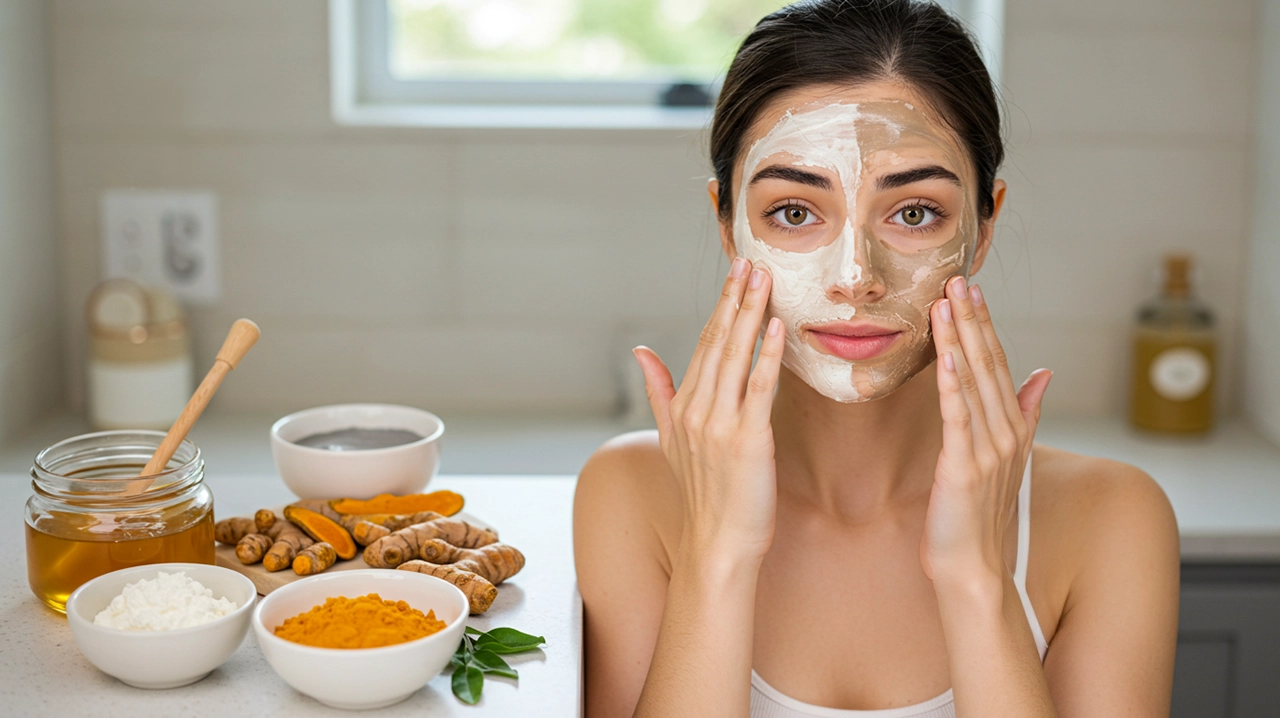

Ever wondered how celebrities maintain their flawless, camera-ready skin? You’re not alone! In a world focused on achieving flawless skin, it’s easy to feel overwhelmed by the countless skincare products and mixed advice. But what if we told you that achieving that coveted celebrity glow is simpler than you think?
Imagine waking up every morning to radiant, healthy skin that makes you feel like a star. No more hiding behind layers of makeup or feeling self-conscious about your complexion. It’s time to unlock the secrets of celebrity-approved skincare and transform your routine from lackluster to luxurious. In just 7 simple steps, you can transform your skincare routine and embrace the confidence that comes with beautiful skin.
Ready to embark on your journey to red carpet-worthy skin? Let’s dive into the seven step celebrity-approved routine that will have you glowing like never before. From cleansing to weekly treatments, we’ll guide you through each crucial step, revealing the techniques and products that keep the stars looking flawless.
Selecting the perfect cleanser is crucial for kickstarting your skincare routine. Your skin type plays a pivotal role in determining which cleanser will work best for you. Here’s a quick guide to help you choose:
Skin Type | Recommended Cleanser | Key Ingredients |
Oily | Gel or foaming cleanser | Salicylic acid, tea tree oil |
Dry | Cream or oil-based cleanser | Hyaluronic acid, ceramides |
Combination | Mild, pH-balanced cleanser | Glycerin, aloe vera |
Sensitive | Fragrance-free, gentle cleanser | Chamomile, allantoin |
Acne-prone | Medicated cleanser | Benzoyl peroxide, alpha-hydroxy acids |

Now that you’ve chosen the right cleanser, it’s essential to use it correctly for maximum benefits. Follow these steps for a thorough cleanse:
If you work out or sweat excessively, always cleanse your face afterward to prevent breakouts. However, be cautious not to over-cleanse, as this can lead to skin irritation and dryness.
For those who wear makeup, consider double cleansing in the evening. Remove makeup with an oil-based cleanser or micellar water, then wash your face with your regular cleanser to clear away dirt and product.
Remember, cleansing is the foundation of your skincare routine. Choose the right cleanser, use proper techniques, and cleanse at the right frequency to achieve healthier, more radiant skin. With your face now clean and prepped, you’re ready to move on to the next step in your skincare journey: toning. This step helps balance your skin’s pH and gets it ready for the next skincare products.

Using a toner can significantly improve the overall health and appearance of your skin. It helps to tighten pores, making them appear smaller and reducing the likelihood of clogging. Additionally, toners can provide an extra layer of hydration, leaving your skin feeling refreshed and revitalized.
Skin Type | Recommended Toner Type | Key Ingredients |
Oily/Acne-prone | Astringent | Salicylic acid, witch hazel |
Dry/Sensitive | Hydrating | Hyaluronic acid, glycerin |
Combination | Balancing | Niacinamide, green tea |
Mature | Anti-aging | Retinol, peptides |
For an extra boost of hydration, you can try the “7-skin method.” This Korean beauty technique involves applying multiple thin layers of toner to deeply hydrate and plump the skin.
Apply the first layer evenly across the surface and wait until it absorbs completely. Then, apply the second layer and allow it to absorb fully. Repeat the process for the third, fourth, fifth, sixth, and seventh layers, ensuring each one absorbs before adding the next.
Remember, toning should be a gentle process. Avoid harsh rubbing or tugging at your skin, which can cause irritation and premature aging. If you use a toner with active ingredients like AHAs or BHAs, start by applying it every other day. This will give your skin time to adjust.
By incorporating toning into your skincare routine, you’re setting the stage for better absorption of serums and moisturizers. This step balances your skin’s pH and preps it for the next products.
Ingredient | Benefits |
Vitamin C | Brightens, evens skin tone, boosts collagen production |
Hyaluronic Acid | Hydrates, plumps skin, reduces fine lines |
Retinol | Promotes cell turnover, fights acne, reduces wrinkles |
Niacinamide | Regulates oil production, minimizes pores, strengthens skin barrier |
Peptides | Stimulates collagen, improves skin elasticity |
By following these application techniques, you’ll ensure that your skin receives the full benefits of your chosen serums.
With the right serums for your skin’s needs and proper application, you can achieve that coveted celebrity-like glow. Next, we’ll explore the importance of eye cream in your skincare routine and how it can help nourish the delicate eye area.
You might wonder why you need a separate eye cream when you’re already using a moisturizer on your face. The skin around your eyes is unique and requires special attention. The skin around your eyes is more delicate and can show signs of aging sooner than other areas of your face. That’s why incorporating an eye cream into your skincare routine is crucial.
Using a separate eye cream offers several benefits:
When choosing an eye cream, look for these ingredients that nourish and protect the delicate eye area:
Ingredient | Benefits |
Retinol | Stimulates collagen production, reducing fine lines and wrinkles |
Vitamin C | Brightens dark circles and protects against free radical damage |
Hyaluronic Acid | Hydrates and plumps the skin, minimizing the appearance of fine lines |
Caffeine | Reduces puffiness and improves circulation |
Peptides | Strengthens skin and promotes elasticity |
Remember, not all eye creams are created equal. Choose one that addresses your specific concerns and complements your skin type.
Now that you’ve selected the right eye cream, it’s essential to apply it correctly to maximize its benefits. Follow these gentle application techniques:
Adding eye cream to your skincare routine is important. Applying it correctly helps keep your eyes looking youthful and vibrant.
Remember, consistency is key – use your eye cream twice daily for the best results. If you use it regularly, you will see a clear improvement in your eye area. This will make your skin look more radiant.

Skin Type | Recommended Moisturizer Type | Key Ingredients |
Oily | Oil-free, gel-based | Hyaluronic acid, niacinamide |
Dry | Rich, cream-based | Ceramides, glycerin |
Combination | Lightweight lotion | Squalane, jojoba oil |
Sensitive | Fragrance-free, hypoallergenic | Aloe vera, chamomile |
Acne-prone | Non-comedogenic | Salicylic acid, tea tree oil |
Remember that your skin’s needs can change with the seasons or hormonal changes. So, adjust your moisturizer as needed.
Pro tip: For an extra boost of hydration, try the “moisture sandwich” technique. Apply a lightweight hydrating serum or essence before your moisturizer, then seal it all in with a facial oil.
Remember, consistency is key when it comes to moisturizing. Make it a non-negotiable step in both your morning and evening routines for the best results.
Now that your skin is well-hydrated and protected, you can move on to the next important step: sun protection. Sunscreen is your best defense against premature aging and skin damage. Let’s explore how to add this essential product to your daily routine.

Now that you’ve moisturized your skin, it’s time to focus on the most crucial step in your skincare routine: sun protection. You might wonder why sunscreen is so important, especially if you’re not spending much time outdoors. The truth is, your skin needs protection every day, regardless of the weather or your location.
UV rays can penetrate through windows and clouds, causing premature aging, dark spots, and even skin cancer. By using sunscreen every day, you are not only stopping sunburn. You are also keeping your skin healthy and looking young.
Chemical Sunscreens | Physical Sunscreens |
Absorb UV rays | Reflect UV rays |
Lightweight texture | May leave white cast |
Ideal for daily use | Better for sensitive skin |
Need time to activate | Work immediately |
Your choice will depend on your skin type, lifestyle, and personal preferences. If you have sensitive skin or prefer a more natural option, physical sunscreens might be your best bet. For daily wear under makeup, you might find chemical sunscreens more suitable.
You’ve likely heard that you should use sunscreen, but do you know how much? Many people underestimate the amount needed for adequate protection. Here’s a simple guide:
Remember, it’s always better to apply a bit more than to skimp on sunscreen. Proper application ensures you’re getting the full SPF protection stated on the product.
By making sunscreen application a habit, you’re taking a significant step towards maintaining healthy, youthful-looking skin. Remember, the best anti-aging product is the one that protects your skin from sun damage in the first place. Now that you know how to protect your skin from the sun, let’s talk about the last step in your skincare routine. This step is about weekly treatments that can improve your skin health.
Now that you’ve established a solid daily skincare routine, it’s time to take your regimen to the next level with weekly treatments. Let’s start with exfoliation, a crucial step in achieving that celebrity-worthy glow.
Exfoliation offers numerous benefits for your skin:
Method | Pros | Cons | Best for |
Physical | Immediate results, tactile experience | Can be harsh if overused | Normal to oily skin |
Chemical | Gentle, consistent results | May cause initial purging | All skin types, including sensitive |
Choose the method that works best for your skin type and concerns. Remember to exfoliate only 1-2 times per week to avoid over-exfoliation.
Face masks are an excellent way to address specific skin issues and give your skin a boost of nourishment. Here are some popular types of face masks and their benefits:
Choose a mask that targets your specific skin concerns. For example, if you’re dealing with acne, opt for a clay mask with salicylic acid. If you’re looking for an anti-aging boost, try a sheet mask infused with hyaluronic acid and vitamin C.
Achieving flawless skin doesn’t have to be a distant dream. By following these seven simple steps, you can create a skincare routine that rivals those of your favorite celebrities.
Remember, consistency is key. Cleanse your skin, tone it, and apply serums. Nourish your eyes and moisturize your face.
Protect your skin with sunscreen. Enjoy weekly treatments to reveal your skin’s true potential.
Your journey to radiant skin starts now. Embrace this celebrity-approved routine and watch as your complexion transforms.
With dedication and the right products, you’ll soon be turning heads and feeling confident in your own skin. Why wait? Start your path to flawless skin today!

She is a passionate skincare specialist with years of experience helping people uncover their best skin. As the founder of this blog, she blends science-backed advice with practical, everyday tips to make glowing skin accessible to all.
Your Ultimate Guide to Healthy, Glowing Skin – Expert Tips, Honest Reviews & Skincare Secrets!
Sign up our newsletter to get update tips, honest reviews & skincare secrets!